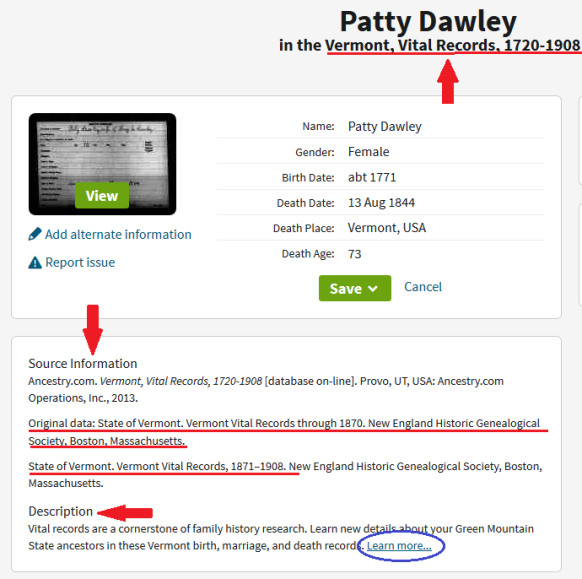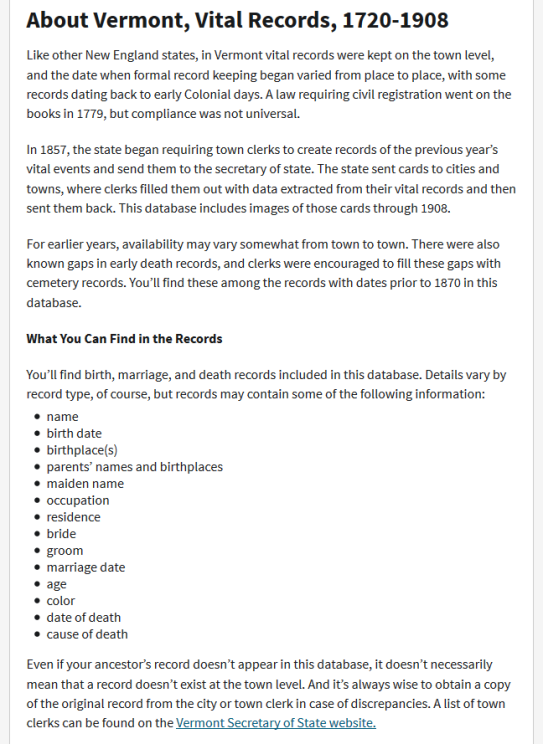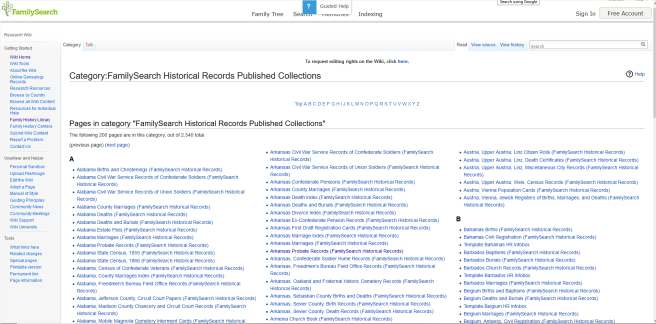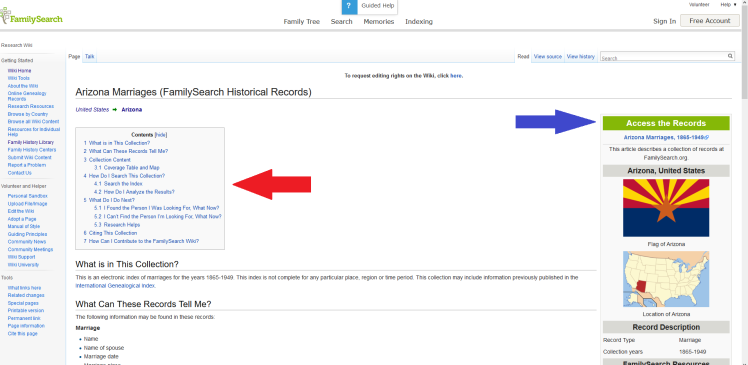Records don’t exist in a vacuum. (For the purposes of this post, I am referring to microfilmed images of records we have located online). It’s important to understand the record in terms of the collection it’s found in. Once we’ve located a record, we need to ask ourselves questions about the record and the collection. Questions such as:
Who created this collection?
Does my record fit in this collection?
Is there anything unusual about my record that other records in the collection don’t have?
Is something missing that should be there?
Is the record an original or a copy?
Are there gaps in this collection?
Does the collection have an index and if it does, was the index created at the same time as the record?
We can answer those questions in two ways:
First, by studying our record image and the images that come before it and after it on the microfilm. We can compare handwriting – is it all the same in the collection (indicating perhaps a clerk copied the information from elsewhere)? Have we gone to the beginning of the film (or the beginning of the Item number on the film) and studied any images that may appear of the book cover that our record comes from? As we do so, we gather information which helps us place our record in context.
Second, we can study the collection description, which is what this post focuses on.
Where to find collection descriptions?
A quick example using Ancestry
One of the results in a search for Patty Dawley, born about 1771 in Vermont, is a death record.

The top red arrow in the image above points to the title of the collection that the record is found in. In this example, the record is in Ancestry’s collection titled, ‘Vermont, Vital Records, 1720-1908’. The red arrow in the middle gives us further source information on the collection, including where the original data came from and which repository was responsible for first compiling the collection.
The red arrow toward the bottom points to the description of the collection and this is where Ancestry does a decent job of describing the collection further. Click on the Learn more… in the blue circle and a page will appear with a search box at the top, allowing you to search only within this collection. But page down, past the Source Information we just saw on the previous page. Here we are given more information (see image below) about the collection, including a brief history of when vital records were kept in Vermont, when the law came into being which dictated the keeping of those vital records and the availability of the records. Any known gaps in the records are also given. All of this information helps us to place into context our specific record. Perhaps even more than that, the description of the collection allows us to determine whether a record we are seeking exists in this particular collection.

Another example using FamilySearch
Familysearch.org offers excellent descriptions of its record collections. Begin here at the Category: FamilySearch Historical Records Published Collections. This is an alphabetical listing of all the FamilySearch historical record collections (only the published ones). Find the collection you are interested in and click on the link provided. We’ll use the Arizona Marriages collection as an example:


There is a wealth of information on the individual collection page. The red arrow above points to the Contents of the page. Of great importance is the general collection description which states that this is an index only collection so we will not find images of the actual marriage documents here. There is a coverage table and map showing which counties are covered by this index. There is information on what to do if you are unable to find your ancestor in the collection. The blue arrow points to the ability to access and search the collection from this page.
When we understand the record collection, we are better able to understand our specific record. Genealogists consider the weight of evidence in each document they use. Understanding why and how that document was created aids in being able to effectively weigh the evidence the document provides.
As important as it is to understand the collection our record is in, it is equally important to understand the laws at the time the record was created. Next week’s post will focus on how the laws of the time influenced the records created by our ancestors.


I loved this post! i try to read your blog fairly often, and you’re always
coming out with some great stuff. Iembedded this on my facebook,
and my followers really liked it. Continue the great work
🙂
LikeLike
Thanks for sharing! It’s a good reminder to look over the descriptions of the collection before doing a serious search in that collection. In your first example from Ancestry, if you did not find the record that you were looking for, reading the description might tell you why. The description states that clerks filled in death records earlier than 1870 using cemetery records, and if your ancestor happened to be buried in a cemetery that never kept early records, or the records were destroyed, then they may not appear in this collection. Great post!
LikeLiked by 2 people
Thanks for stopping by, EvaAnne. It’s amazing what useful info the collection descriptions can have for our research!
LikeLiked by 1 person
Great explanation of understanding your source. I really enjoyed the screen shots that help tell the story. I’m always trying to figure out where the images came from and sometimes it’s really frustrating. These huge collections are really a collection of smaller parts.
LikeLiked by 2 people
A very detailed, thought-provoking post on how we should use and evaluate records. Thank you.
LikeLiked by 2 people
Thanks, Sue! And thanks for stopping by!
LikeLike
This is such good information, thank you!
LikeLiked by 1 person
Thank you, Liz!
LikeLiked by 1 person
This is a great thing to share with begining genealogists. First, it is fun to track down the answers to the questions. Second, it is educational and informative, you really feel like you are squeezing new information out of the record, because you are. Third, it makes one more aware of the difference between what is an original source, what is a derivative and what is evidence. Fourth, it makes you more aware of recognizing when others have just copied information vs having actually studied the record. Fifth, once you get good at answering the questions, you can understand how to create better source citations. Sixth, it is fun. Great post.
LikeLiked by 3 people
Well said, Michael!
LikeLike
Thanks, Michael! I like the added benefit of writing better citations because which of us couldn’t use that, right?! 🙂 Thanks for stopping by!
LikeLiked by 1 person